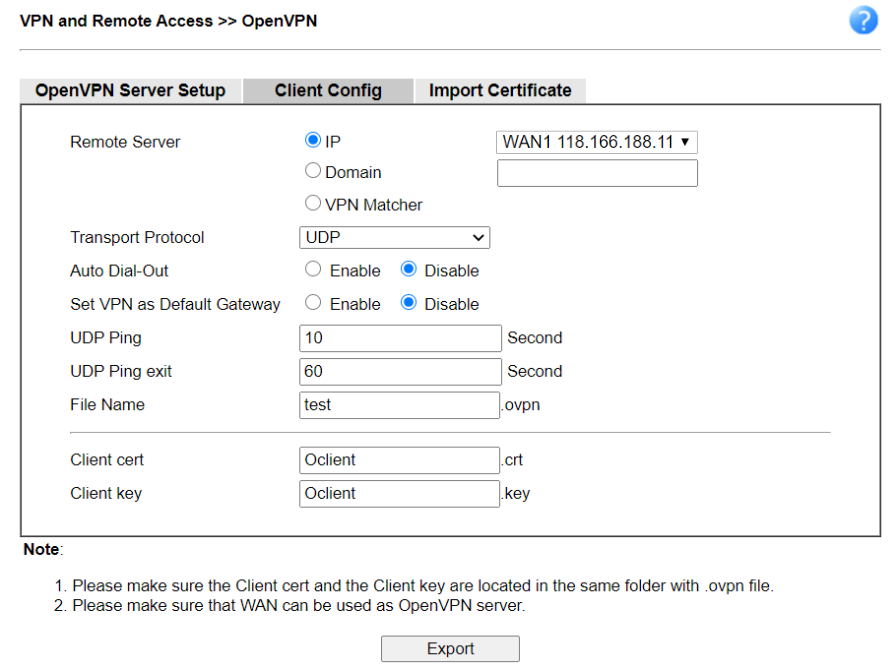In short: OpenVPN Access Server is 'almost free' and 'just OpenVPN' (Community Edition) is totally free However, they are configured in different ways. Open AS has indeed a web interface that simplifies (a lot) the tasks for setting it up. Open CE on the other hand, has to be configured by editing some configuration files OpenVPN Access Server. It creates an Ubuntu VM, does a silent install of openvpn access server, then make the basic server network settings: define the VPN Server Hostname to be the VM's public ip's DNS name This Azure Resource Manager template was created by a member of the community and not by Microsoft. In this tutorial i will show how increase concurrent Users in Openvpnas first of all we need file:D you can download all openvpn distribution for linux.
Openvpn -version bash: /usr/sbin/openvpn: No such file or directory Obviously this means I don't have the openvpn binary in the /bin directory, but I have no idea what resulted from running the './build' script and I don't know how to either place the binary in /bin or link the binary there.
We will see here how to set up a OpenVPN server under MicrosoftWindowsServer.
OpenVPN is a very powerfull VPN which has several advantages : it is free, compatible with most operating systems, easy to implement and highly configurable.
Network diagram
Server configuration
- OpenVPN Server :
- OS : Windows Server 2016
- Role : OpenVPN Server
- IP : 192.168.0.200
Installing OpenVPN
Go to OpenVPN official website and download https://openvpn.net/ last installer.
- As we want to install OpenVPN as server we will choose Customize :
- We enable OpenVPN Service in order to make it work at boot :
- And we install EasyRsa in order to be able to create server and clients certificates :
- Once done click Close :
Setting up Certificate Authority (CA) and generating certificates and keys for server and clients
Here we will set up a pki to be able to create our server and clientscertificates.
- Open a Command Prompt as administrator :
- And type the following commands to enter inside EasyRSA shell :
- Remove existing configuration, just for good measure :
- Initialize pki, and type yes to confirm :
- Build certificate authority :
- Build server certificate and key :
- Generate Diffie Hellman parameters :

- Generating client certificates :
Certificates
- Put this files (from C:Program FilesOpenVPNeasy-rsapki, C:Program FilesOpenVPNeasy-rsapkiissued and C:Program FilesOpenVPNeasy-rsapkiprivate) :
- ca.crt
- dh.pem
- server.crt
- server.key
- To C:Program FilesOpenVPNconfig-auto and C:Program FilesOpenVPNconfig folders.
Add a Windows Firewall Rule
We need to open 1194udp port to allow OpenVPN clients connections. Use the Windows Firewall Management Console or this command inside a Administrator command line console to do that.
C:Program FilesOpenVPNconfig-autoserver.ovpn
As administrator, edit C:Program FilesOpenVPNconfig-autoserver.ovpn file :
Then, restart the OpenVPN service :
- From, services management console :
- Right click OpenVPNService then Restart :
Openvpn Access Server License Key Fivem
- Or from an administrator Command Prompt :
Client configuration
- OpenVPN Client :
- OS : Windows 10
- Role : OpenVPN Client
Installing OpenVPN
We will download the same package, and here install with default parameters.
Copy certificates from the Server
- From the Server get the following files (from C:Program FilesOpenVPNeasy-rsapki, C:Program FilesOpenVPNeasy-rsapkiissued and C:Program FilesOpenVPNeasy-rsapkiprivate) :
- ca.crt
- client01.crt
- client01.key
- And paste them to C:Program FilesOpenVPNconfig.

- C:Program FilesOpenVPNconfigclient.ovpn
Edit the client.ovpn file with administrator rights :
Establishing the connection
- Run as administrator
- Start the connection
- A pop up will confim that we are connected
Server Access
To join the server we will use the 10.50.8.1 IP Address
Troubleshooting : After a Windows Update, I couldn't have access to the server share anymore (OpenVPN was able to connect though). To make it work again, I had to repair the OpenVPN program on the server side.
Oh the joy of WFH.
Windows 10, even the Home edition, came with a built-in VPN server, or so I was told. Unfortunately, I could’t get it to work. Therefore I need to setup OpenVPN. It worked, kind of, it’s connected but no accesss to LAN or internet, so it needed some tweaks. Unfortunately again, the instructions were kinda over the place. Or maybe it’s already clear, but I skipped them over. At any rate, this collected notes is a self reminder for probable future usage.
- Grab OpenVPN access server installer https://openvpn.net/community-downloads/
- Install and follow the instruction.
- Edit the server configuration file.
- Edit the client configuration file.
- Open Windows Services on the OpenVPN server, enable Routing and Remote Access service
- Register a DDNS address. I use no-ip.com
- Login to your router. If it supported DDNS, set it up. If it’s not, buy another one.
- Setup port forwarding on the router.
Openvpn Access Server License Key Free
- Set static routing on the router so that traffic from/to 10.8.0.x is routed through the OpenVPN server’s local address.
- Start the OpenVPN server, send the client configuration and certificate files to the clients, and start OpenVPN connect on the client side. The client now should be connected to the OpenVPN server, have access to internet and have access to LAN resources at the server side.
- (2021/01/19 edit) Also make sure you don’t enable IPv6 on your router. Even if it’s disabled, sometimes updates from your ISP will enable your router’s IPv6 connectivity -making your OpenVPN server, with the above config, inaccessible from outside- therefore you need to manually disable it. OpenVPN does support IPv6, but I’d rather not dealing with it yet.